Grant Spotlight | November 30, 2017
Share This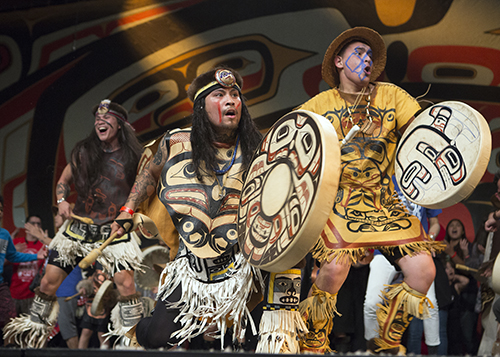
Project Snapshot
Grant Program Name: Native American Library Services, Enhancement
Grant Log Number: NG-03-15-0022-15
Year Awarded: 2015
Recipient: Sealaska Heritage Institute
Project Name: A Decade of Celebrating Native Culture: Educating with Archival Recordings of Southeast Alaska Native Dance & Song
“This digitization project was spurred by people who were incredibly excited to see grandparents or great grandparents in these captivating videos. There were so many people who wanted to see more of this footage that hadn’t been seen or experienced in more than 30 years.” – Jennifer Treadway, Archivist, Sealaska Heritage Institute
Every two years, in Juneau, Alaska, thousands of people wrap themselves in the bright colors of Native American regalia and share the traditions that symbolize the indigenous culture of Southeast Alaska. For more than 30 years, the biennial Celebration event has evoked statewide tribal pride for the three Alaska Native cultures that have survived in Alaska for 10,000 years. The vibrant colors, poetic languages, and array of traditions showcase the Tlingit, Haida, and Tsimshian cultures that have endured throughout tribal history and continue to represent a significant portion of the state’s population.
“When we digitized the small portion of the 1982 Celebration, the response was overwhelmingly positive,” said Jennifer Treadway, archivist for Sealaska Heritage Institute (SHI). “People wanted to see more. And because of that response, we wanted to capture some of that material found on those tapes that were in jeopardy of being lost forever.”
This two-year project allowed for SHI to “unlock” these hidden archives, making them widely available to tribal members, scholars, educators, and the general public who have a vested interest in Alaska’s Native tribes.
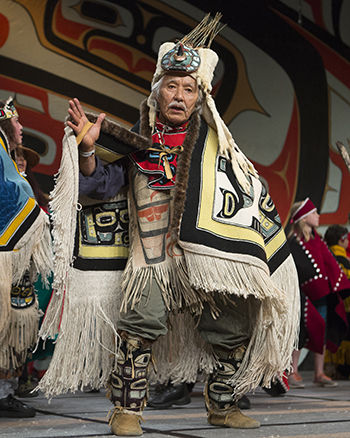
Sealaska: Representing the Tribal Population of Southeast Alaska
Established in 1980, SHI perpetuates and enhances the Tlingit, Haida, and Tsimshian cultures by making archival and educational material widely available to promulgate the traditions and cultures of Alaska’s indigenous people. In their more than 30-year history, SHI has collected 3,100 linear feet of archival and historical manuscripts, papers, photographs, and audiovisual recordings, as well as 500 art and ethnographic objects and a library of 2,500 books. These materials represent the more than 10,000 years of Southeast Alaska Native culture, a culture which currently makes up 20 percent of the population of Southeast Alaska.
Celebrating 10,000 Years of Cultural Survival
Now a major part of SHI’s programming, the first Celebration occurred in 1982 at the urging of Elders who expressed concern that their respective cultures were dying after a period of severe oppression. The Elders wished to celebrate their unique, rich cultures that have and would continue to endure. These biennial, multi-day events showcase Alaska Native dance, art, culture, and language important to the region.
“This will likely be one of the three most significant days of our lives,” said Byron Mallott, Chair, Sealaska, in 1982 when he opened the first Celebration. “I think among us all, we sense, down deep, that we must come together one more time, we must come together as a people, and we must stay together. And we must stay together for a purpose. And that purpose is allowing us to continue surviving as Tlingit, and as Haida, and as Tsimshian people.”
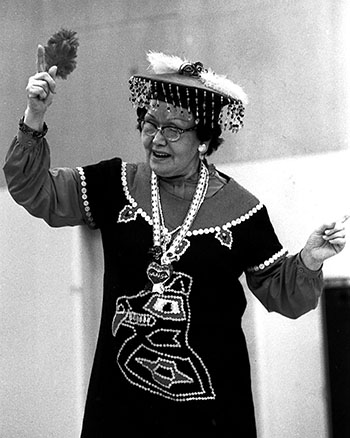
Today, Celebration is one of the largest events in Alaska, drawing 6,000 attendees and 5,000 online and cable television viewers. Celebration includes cultural performances and traditional oratory, display of traditional regalia, including carved and painted clan hats and dresses, Chilkat robes and button blankets, and presentation of traditional song and dances. The event has evolved to include a Native art market, a juried art show and competition, food contests, lectures, film screenings, a toddler regalia review and a parade through Juneau.
Digitizing Hidden Collections
In 2015, SHI received their IMLS grant to support the digital transfer and preservation of audiovisual recordings of the first four Celebrations (1982, 1984, 1986, and 1988). The outdated formats of these tapes were underscored by heightened inaccessibility due to sparse metadata and improper storage that a recent facility relocation helped solve.
Over a two-year period, more than 200 hours of footage found on 251 tapes were digitized, edited, and given proper metadata, which enhanced cultural descriptions. The project also enabled SHI to produce segments of individual dance groups and performances, allowing current tribal members to study the evolution of their tribal traditions. Once digitization was completed, a review by SHI’s Council of Traditional Scholars, comprised of Tlingit, Haida, and Tsimshian Clan Elders and dance leaders, took place to ensure that editing and metadata kept the spirit of the original tapes.
“Digitizing more than 250 outdated videotapes that include this rare material was so critical,” said Treadway. “If not for this project, the footage of culturally significant material would be lost forever. Instead, we were able to preserve this rare audiovisual footage for many generations to come. It was also a beautiful experience to see our Council of Traditional Scholars experience these tapes and their history.”
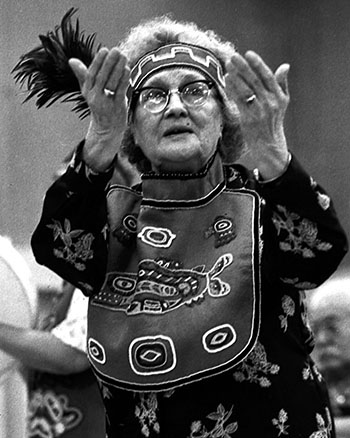
After two years, digitization is complete. SHI created public-use copies of the tapes, ensured proper cataloging, and disseminated content in their newly-constructed reading room via a searchable database and workstation, facilitating general use and appreciation of Celebration material for those who wish to study and embrace these Alaska Native cultures.
“Besides substantially increasing access to these historical performances by Southeast Alaska Natives and school-age children, these tapes will provide a significant opportunity for scholars (Native and non-Native) to observe and study changes in singing and dancing practices over time, and document the evolution of these traditional cultural practices,” Chuck Smythe, SHI’s History and Culture Director. “The SHI Council of Traditional Scholars, for example, noted that there have been changes in the ceremonial regalia that are now brought out in these events and in the amount of traditional harmony that women’s voices lend to the singing of certain clan songs."
Education through Archival Material
While a primary goal of the project was ensuring proper archival and digitization techniques of these rare and precious audiovisual materials, the tapes of the original Celebration proceedings also provide current tribal members with a unique and substantial record illustrating how Native practices evolved. Current tribal members use these tapes to understand the dynamic nature of their culture and how practices are conducted today in relation to the past.
Education, however, goes beyond the tribal members to reach K-12 and university students with the intent of improving race relations, building respect for cultural diversity, and preserving the knowledge, values, and history of Alaska Native culture.
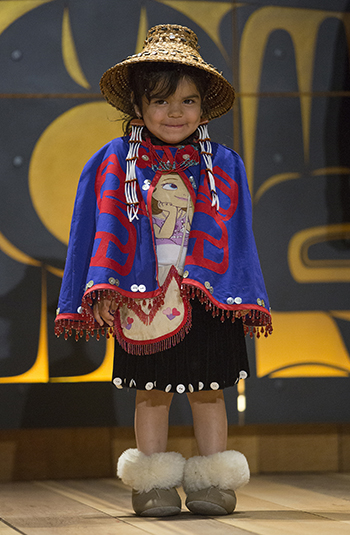
“Teachers in Southeast Alaska are always excited to include Celebration footage in their materials, but we wanted to help them provide context of Celebration and how it can be applicable to lessons being taught in school,” said Treadway. “Highlight videos help better illustrate to younger audiences Celebration’s importance to Alaska Natives and communities across Southeast Alaska.”
SHI also hosts a cohort of teachers annually to participate in “Through the Cultural Lens,” a program in which teachers can familiarize themselves with the archive materials and how they can be integrated into the classroom.
In two years, the project has already led to greater knowledge dissemination in educational arenas. Through development of educational materials and videos specifically edited for students, Native American history is integrated into lessons, promoting cross-cultural identity and appreciation.
Digitizing the Next Decade
As their IMLS project nears completion, SHI is already planning for the digitization of the next Celebration tapes up to 1996, noting the importance of keeping up with current technologies and formats that enable wide accessibility of the material. In the spirit of accessibility, Celebration tapes will be made available online in subsequent phases of the project.
In the coming months, SHI hopes to share their project and experience both on the state level through webinars, and on the national level through conference attendance. And in the future, they hope to share their best practices with small institutions in Alaska, helping promote proper archival and digitization techniques that will keep material safe for generations.
About the Project
Grant Program name: Native American Library Services, Enhancement
Grant log number: NG-03-15-0022-15
Year Awarded: 2015
Recipient: Sealaska Heritage Institute
Website: www.sealaskaheritage.org
Project Contacts:
Jennifer Treadway, Archivist
907-586-9261
jennifer.treadway@sealaska.com
